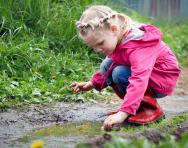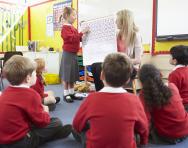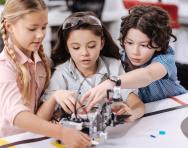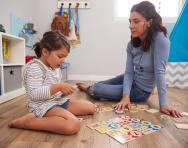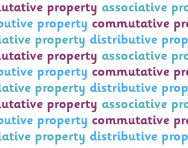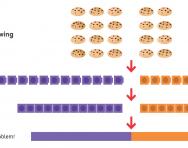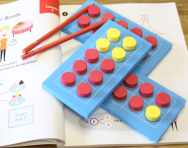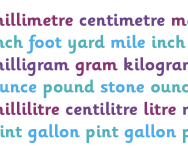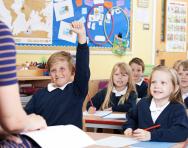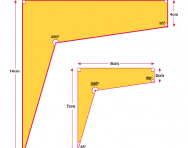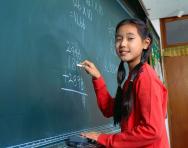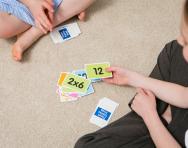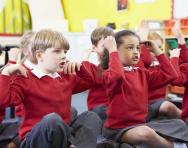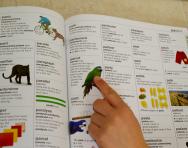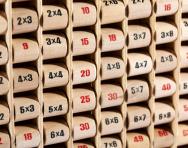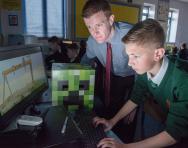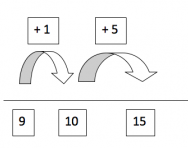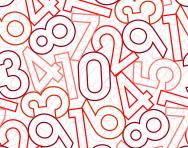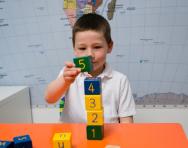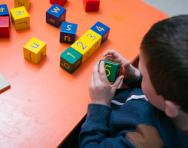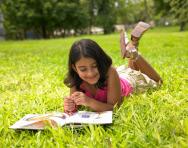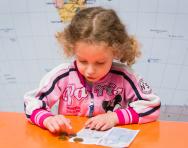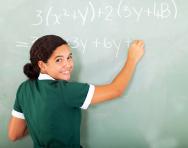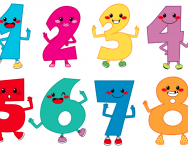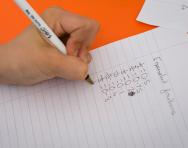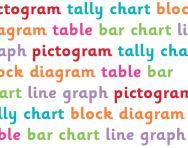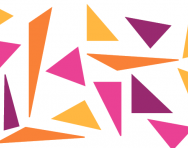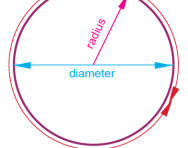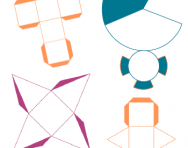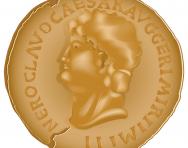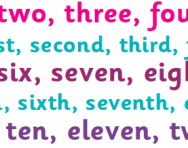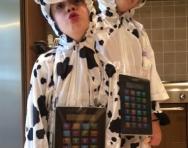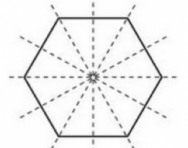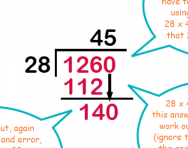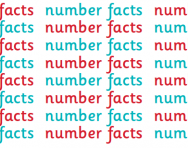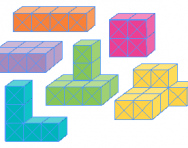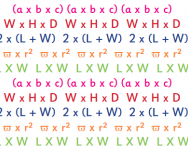Maths articles
Learning maths in the great outdoors
Getting their hands dirty can help children discover a passion for maths. Here’s how to make the subject work outside the classroom.
How maths teaching has changed since we were at school
Bus stops, the grid method, number bonds… Maths in today’s classroom can seem undecipherable. We look at how things have changed since we were kids.
How to future-proof your child's learning
Is your primary-school child getting the education they'll need to thrive in the 21st century? Jill Hodges, CEO and Founder of Fire Tech technology classes and camps for kids, describes the five skills young people will need, at work and in life, to make the most of our technological society's opportunities.
Best maths board games for children
Looking for an engaging way to practise maths concepts and skills? Try a mathematical board game! Whether your child is learning about times tables or place value, addition or square roots, there's a family-friendly board game to try. Get ready to roll the dice...
What are the commutative, associative and distributive property?
The commutative, associative and distributive properties or laws underpin algebra and are first introduced to children, in very broad terms, in the primary-school years. We explain how your child will start to understand the basics of higher maths in our guide for parents.
What is the bar model method?
The bar model method is a key part of the Singapore maths mastery approach now being taught in primary schools. Mastery expert Kate Moore from Maths – No Problem! explains the thinking behind the method and how you can support your child's learning at home.
What is the concrete pictorial abstract approach in maths?
Concrete > pictorial > abstract (CPA) is a key feature of the Singapore maths mastery method now being taught in many primary schools. Mastery expert Kate Moore from Maths – No Problem! explains what's involved.
What are imperial units?
How children learn about imperial units of measurement in primary school, plus metric to imperial conversion tables.
5 reasons kids hate maths – and what you can do about it
Does your child dread their maths lessons and end up in tears over homework? We take a look at what’s going wrong, and how you can help.
What is scale factor?
Children learn about scale factor in Year 6 maths. Find out how to reinforce their understanding at home with our parents' guide to scale factor.
What is the Asian 'maths mastery' approach?
Many UK primary schools have adopted a way of teaching maths that’s popular in South Asia. We explain what the Asian "maths mastery" method is all about.
Best maths books for kids
Crack codes, learn maths tricks, unlock the secrets of nature (hint: they're mathematical!), marvel at number facts and learn to build a spaceship – just a few of the maths-master skills imparted by these books, our pick of the best maths titles for kids.
Best learning songs
Could songs and music help your child learn and remember English, maths and science facts? We pick our favourite learning songs, covering everything from adverbs and angles to onomatopoeia and photosynthesis.
Best reference books for children
Reference books and dictionaries offer us information that's accurate, well researched and beautifully presented and are invaluable when you're working on a homework project. From atlases to dictionaries and encyclopedias, we recommend some of the best English, maths, science, history and geography reference books for primary-school children.
Best times tables learning tools
"Times tables practice"... words guaranteed to make any primary-school parent's heart sink. Make multiplication tables learning a little less painful and a little more effective with our pick of the best games, apps, songs and tools on the market.
Learning through Minecraft
You may think it’s just another video game – albeit a particularly addictive one – but Minecraft could have educational benefits too…
What is bridging through 10?
You probably "bridge through 10" without even realising it when you're adding up numbers in your head. We explain how this method will be presented to your child in the classroom and how you can help them practise at home.
What is a quadrilateral?
Can you name the 2D shapes we classify as quadrilaterals? Find out how your child will learn about four-sided, 2D shapes in primary school and try some hands-on activities to reinforce their learning at home.
The Year 4 Multiplication Tables Check (MTC) explained
A formal test of multiplication skills takes place in the summer term of Year 4. Our guide for parents explains how the Multiplication Tables Check (MTC) will work in English primary schools.
Hands-on maths: how it could help your child
Counting on fingers is an important maths tool in the early years of primary school, but is it something your child should outgrow? We look at the pros and cons of hands-on maths strategies.
Five fun maths activities to try at home
From board games to baking, we’ve rounded up the best ways to get your child practising their maths skills without even realising.
Best maths story books for children
Introduce ratio, pie charts, probability and even simplifying fractions to children with these brilliant maths story books, picture-book presentations of mathematical concepts that primary-school children will love.
Early maths skills: how your child learns about number
Counting may seem as easy as one-two-three to us, but it’s a tricky skill for your child to learn. We explain the stages of getting to grips with number in Reception and Year 1.
Science, technology, engineering and maths for girls
As STEM industries consider how to combat a future skills shortage, could your daughter one day become an expert in the field?
Best counting books for children
Counting and sequencing numbers correctly is a big part of early maths. We've picked some brilliant mathematical story books to help support your child's learning at home with vibrant illustrations, memorable characters and great narratives.
Teachers' tricks for KS2 maths
Is your child struggling with KS2 maths? Help them learn effectively and boost their number confidence in Year 3, 4, 5 and 6 with some useful calculation strategies and tips from primary teacher Phoebe Doyle.
What is data handling?
From pictograms to line graphs, children learn a lot about collecting, organising and presenting data in primary school maths. We explain how data handling is taught in KS1 and KS2 and how you can help your child get to grips with basic statistics at home.
What are equilateral, scalene, isosceles and right-angled triangles?
Children learn to classify triangles as equilateral, isosceles, scalene or right-angled in KS2 geometry. Our guide for parents explains everything you need to know about triangles in primary school, from working out the area to calculating the internal angles.
What are the parts of a circle?
By the end of KS2 children are expected to be able to identify the parts of a circle (circumference, radius and diameter) and begin to use formulae to calculate a circle's perimeter and area. We explain what parents need to know about this aspect of primary-school geometry.
What are nets of shapes?
Can you make a 3D shape from its net? We explain how nets are used in the primary classroom to help children learn more about three-dimensional shapes and their properties in a hands-on, constructive way.
What are Roman numerals?
Children in KS2 are expected to read and write Roman numerals as part of the primary curriculum. We explain how Roman numerals are introduced in the classroom and how you can help your child practise reading Roman numerals at home.
What are cardinal and ordinal numbers?
Reception and KS1 children all learn cardinal and ordinal numbers. We explain how your child will be taught to count and sequence numbers correctly and suggest practical, fun activities you can try at home to support your child's early mathematical learning.
What are prisms and pyramids?
Prisms and pyramids explained for parents, including practical ways children work with 3D shapes in the classroom and learn about their properties.
What is a polygon?
Can you tell your hexagons from your heptagons? Your octagons from your decagons? With the help of educational experts, we explain how polygons are taught in primary school, with examples of regular and irregular versions of each multi-sided shape.
No-sew mathematical costumes for Maths Week
A Maths Week costume?!? Don’t get your numbers in a twist! Non-crafty mum Phoebe Doyle’s on hand with some no-sew, no-stress ideas.
What are line symmetry, reflective symmetry and rotational symmetry?
Understand the forms of symmetry your child will be taught as part of the primary-school curriculum (line symmetry, reflective symmetry and rotational symmetry) and see how the concepts are applied in the KS2 classroom.
What is long division?
Children in Year 5 and Year 6 are encouraged to use the long division method to divide larger numbers. We explain the technique and offer a step-by-step guide to using it, as well as an overview of division teaching and the division methods used in primary school.
What are number facts?
Children are expected to memorise a number of different number facts in primary school, including number bonds to 20 and the multiplication and division facts for the twelve times tables. We explain what number facts your child will be taught when and suggest easy ways to support their learning at home.
What is volume?
Volume and capacity are important concepts in primary maths, and your child will start learning about the amount of 3D space occupied by an object in Key Stage 1. Find out how you can support their learning at home, plus the relevant mathematical formulae, with our parents' guide to volume.
What is a formula?
Formulae help children to work out answers to mathematical problems. We explain which formulae your child will be taught in primary school, including how to calculate perimeter, area and volume, and how you can help your child feel confident using a formula in primary maths.
